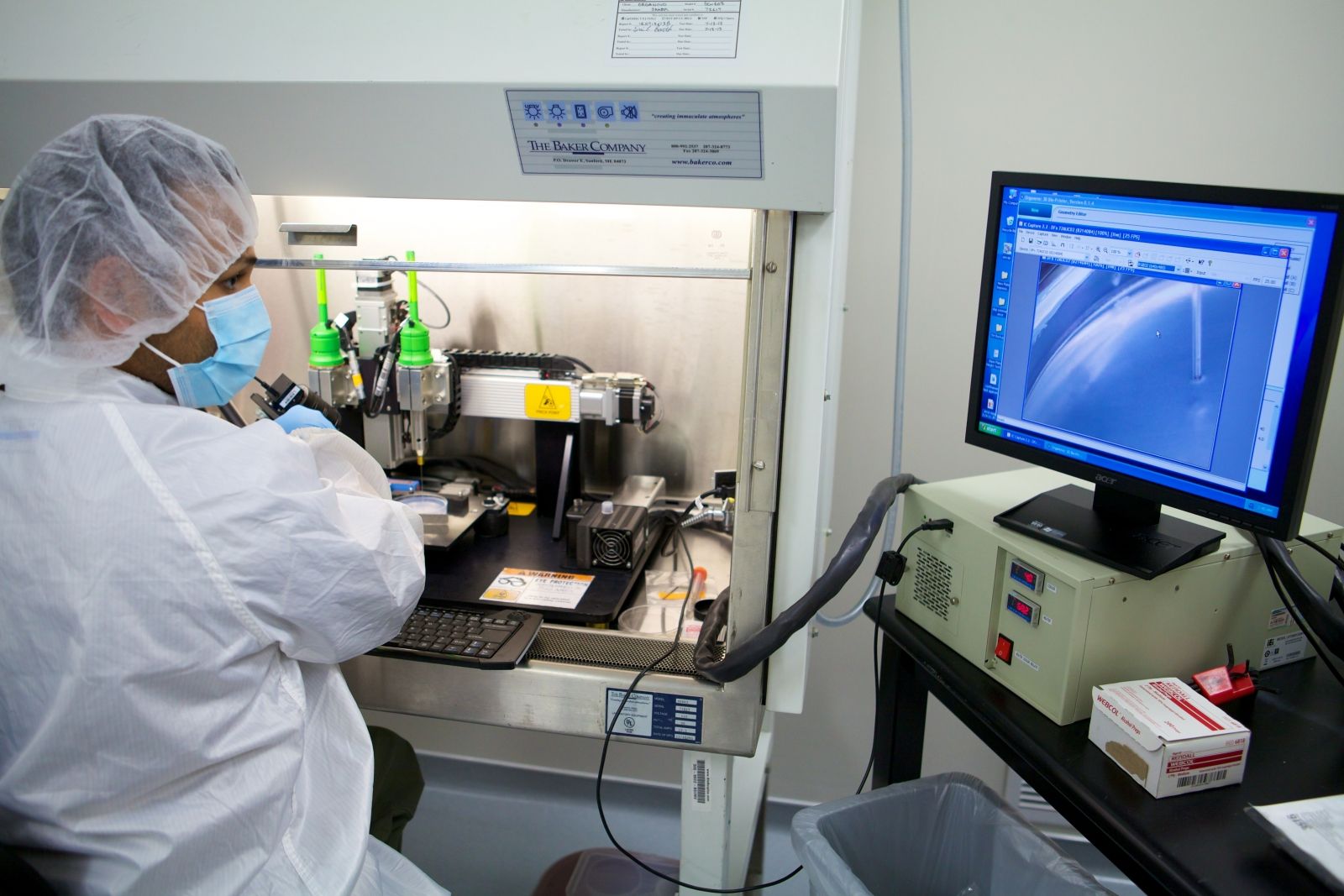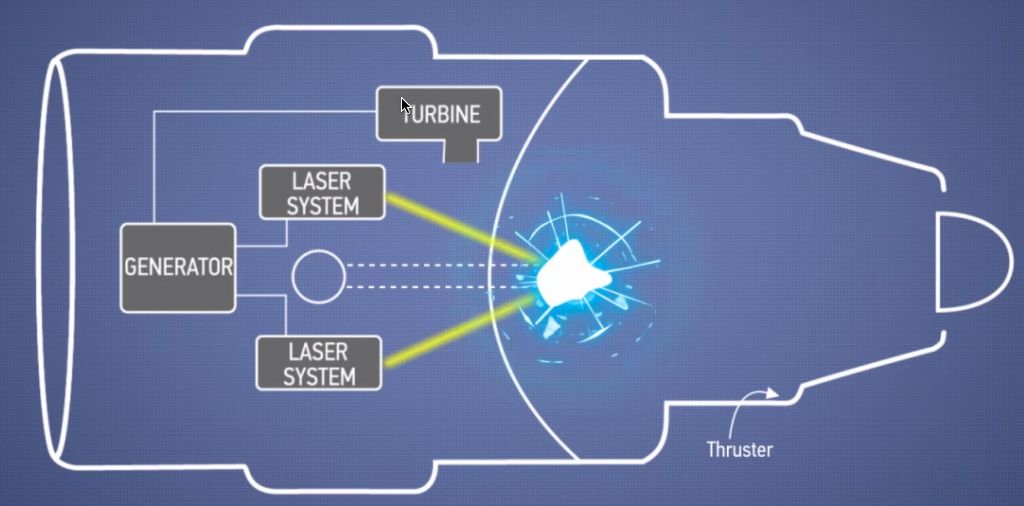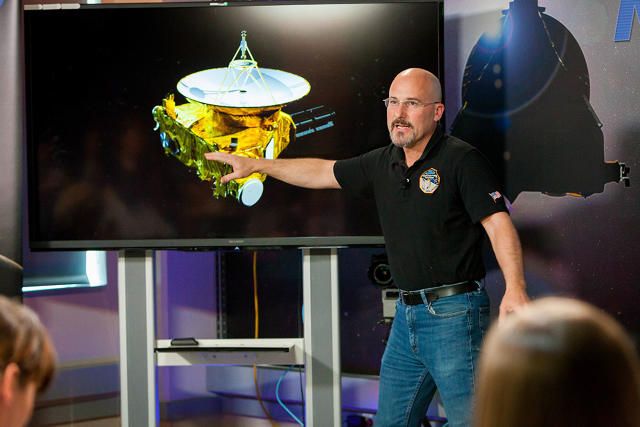I’m not normally of the school of thought that quadrotors should be terminated with a shotgun, but then again, I’ve never seen a DIY drone just casually flying around with a handgun. Until now. Read more
Get the latest international news and world events from around the world.

IBM’s Watson supercomputer is learning Arabic in move to Middle East
IBM supercomputer and Jeopardy champion Watson is setting up shop in the Middle East and North Africa.

Luna: Open Source Artificial Intelligence Demo
The worlds most advanced chatbot?
One day soon, amputees will be able to control their prosthetic limbs with their minds.
One day soon, amputees will be able to control their prosthetic limbs with their minds. http://voc.tv/1cRrjAQ.

A jet engine powered by lasers and nuclear explosions?
Lasers vaporize radioactive material and cause a fusion reaction — in effect, a small thermonuclear explosion (credit: Patent Yogi/YouTube)
Declare Your Independence…from Evolution! Here Comes The Singularity and Transhumanism — Nick Gillespie Reason.com
Independence Day weekend seems like a good time to push the envelope on what is possible for human beings to achieve. Hell, if a rag-tag band of colonists could kick the mighty Brits’ butts so long ago, how hard can it be for today’s people to live to 150, use 3D printers to create new organs, and develop superpowers? Read more

How to plan the ultimate long-term project, from the team who got us to Pluto — By Daniel Terdiman | Fast Company
One thing you don’t expect when planning a nine-year mission to the most distant planet in our solar system is the eventuality that Pluto might not be a planet once you got there.
Yet that’s exactly what went down in 2006. That January, NASA launched its unmanned New Horizons probe, a baby grand piano-sized, 1,054-pound spacecraft, on the first-ever route to Pluto. Then, in August 2006, the International Astronomical Union demoted Pluto to the diminutive status of “dwarf planet.”

The World’s First 3D Printed Building To Be Built In Dubai — Ana Alves WTVOX
Fast-growing Dubai, where something new is always being added to the skyline, may have found a way to make construction move even faster.
In a bid to become a global hub of innovation, Dubai announced plans to build an office that will be “the most advanced 3-D printed structure ever built at this scale” and the first to be put into actual use.
The ‘Indispensable Soma’ theory of ageing
OK. In scientific terms, it is only a ‘hypothesis’ — the reverse of the ‘Disposable Soma’ theory of ageing. Here how it goes.
For the past several decades, the Disposable Soma theory of ageing has been enjoying good publicity and a lively interest from both academics and the public alike. It stands up to scientific scrutiny, makes conceptual sense and fits well within an evolutionary framework of ageing. The theory basically suggests that, due to energy resource constraints, there is a trade-off between somatic cell and germ cell repair. As a result, germ cells are being repaired effectively and so the survival of the species is assured, at a cost of individual somatic (bodily) ageing and death. To put it very simply, we are disposable, we age and die because all the effective repair mechanisms have been diverted to our germ cell DNA in order to guarantee the survival of our species.
The theory accounts for many repair pathways and mechanisms converging upon the germ cell, and also for many of those mechanisms being driven away from somatic cell repair just to ensure germ cell survival. In the past two or three years however, it is increasingly being realised that this process is not unidirectional (from soma to germ), but it is bi-directional: under certain circumstances, somatic cells may initiate damage that affects germ cells, and also that germ cells may initiate repairs that benefit somatic cells!
I can’t even begin to describe how important this bi-directionality is. Taking this in a wider and more speculative sense, it is, in fact, the basis for the cure of ageing. The discovery that germ cells can (or are forced to) relinquish their repair priorities, and that resources can then be re-allocated for somatic repairs instead, means that we may be able to avoid age-related damage (because this would be repaired with greater fidelity) and, at the same time, avoid overpopulation (as our now damaged genetic material would be unsuitable for reproduction).
Ermolaeva et al. raised the further possibility that DNA damage in germ cells may protect somatic cells. They suggested that DNA injury in germ cells upregulates stress resistance pathways in somatic cells, and improves stress response to heat or oxidation. This is profoundly important because it shows that, in principle, when germ cells are damaged, they produce agents which can then protect somatic cells against systemic stress.
This mechanism may reflect an innate tendency to reverse the trade-offs between germ cell and somatic cell repair: when the germ cells are compromised, there is delay in offspring production matched by an increased repair of somatic cells. In Nature’s ‘eyes’, if the species cannot survive, at least the individual bodies should.
In addition, it was shown that neuronal stress induces apoptosis (orderly cell death) in the germ line. This process is mediated by the IRE-1 factor, an endoplasmic reticulum stress response sensor, which then activates p53 and initiates the apoptotic cascade in the germ line. Therefore germ cells may die due to a stress response originating from the distantly-located neurons.
If this mechanism exists, it is likely that other similar mechanisms must also exist, waiting to described. The consequence could be that neuronal positive stress (i.e. exposure to meaningful information that entices us to act) can affect our longevity by downgrading the importance of germ cell repair in favour of somatic tissue repair. In other words, the disposable soma theory can be seen in reverse: the soma (body) is not necessarily disposable but it can survive longer if it becomes indispensable, if it is ‘useful to the whole. This, as we claimed last week, can happen through mechanisms which are independent of any artificial biotechnological interventions.
We know that certain events which downgrade reproduction, may also cause a lifespan extension. Ablation of germ cells in the C.elegans worm, leads to an increased lifespan, which shows that signals from the germline have a direct impact upon somatic cell survival, and this may be due to an increased resistance of somatic cells to stress. Somatic intracellular clearance systems are also up-regulated following signals from the germ line.
In addition, protein homoeostasis in somatic cells is well-maintained when germ cells are damaged, and it is significantly downgraded when germ cell function increases. All of the above suggest that when the germ cells are healthy, somatic repair decreases, and when they are not, somatic repair improves as a counter-effect.
In an intriguing paper published last month, Lin et al. showed that under certain circumstances, somatic cells may adopt germ-like characteristics, which may suggest that these somatic cells can also be subjected to germ line protection mechanisms after their transformation. A few days ago Bazley et al. published a paper elucidating the mechanisms of how germ cells may induce somatic cell reprogramming and somatic stem cell pluripotency. This is an additional piece of evidence of the cross-talk mechanisms between soma and germ line, underscoring the fact that the health of somatic tissues depends upon signals from the germ line.
In all, there is sufficient initial evidence to suggest that my line of thinking is quite possibly correct: that the disposable soma theory is not unidirectional and the body may not, after all, be always ‘disposable’. Under certain evolutionary pressures we could experience increased somatic maintenance at the expense of germ cell repairs, and thus reach a situation where the body actually lives longer. I have already discussed that some of these evolutionary pressures could be dependent upon how well one makes themselves ‘indispensable’ to the adaptability of the homo sapiens species within a global techno-cultural environment.